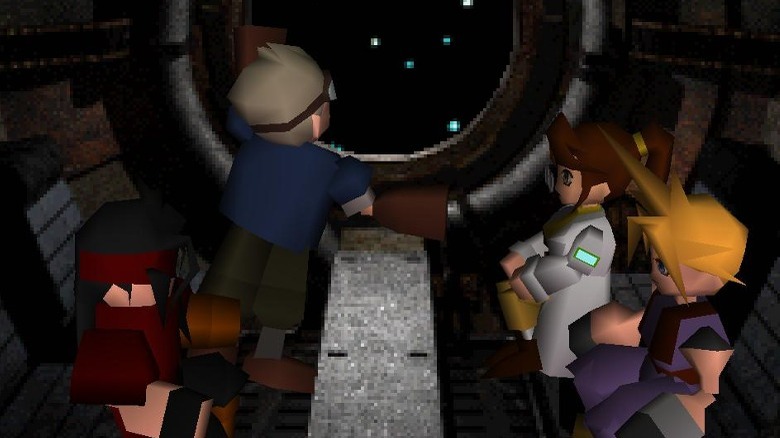The Final Fantasy Character Name That Appears The Most In The Series
The "Final Fantasy" franchise is somewhat unique from other RPGs in that each new numbered entry is not actually a sequel. New "Final Fantasy" titles are typically set in entirely new worlds, with new characters, new combat systems and new enemies to fight. That isn't to say that Square Enix reinvents the wheel each and every time though. There are several common ideas that carry on from game to game. Creatures like Mogs and Chocobos carry over from game to game as do some monsters and the general names and functions of elemental magics. These common threads seem to tie the games together through themes and overall vibes rather than a continuous narrative. But there's another, much stranger thing that has been carried across multiple games in the franchise: the name "Cid."
There has been a prominent character named Cid in every mainline game in the franchise ever since "Final Fantasy 2." Some of them are playable while others are not, most of them are airship captains or pilots, and a few of them have nothing in common with the others at all. Yet this peculiar tradition has persisted for so long that fans have come to expect that a character of this name will make an appearance in each new title Square Enix adds to the franchise.
Some Cids are more influential than others
There have been 14 Cids in the mainline "Final Fantasy" series to date (not including Cid of the Lufaine, who was retroactively added to the first game in the "Dawn of Souls" iOS remake.) All of them play important roles in the story, but some have affected the franchise as a whole more than others. To start, the first Cid was an airship captain in "Final Fantasy 2 " who started a transport business in the town of Poft. It was here that he met Firion and helped him and his party in their assault on the Palamecian Dreadnought. This character was so beloved that he ended up being the template for several of the characters of the same name that followed.
The first playable character of this name was Cid Pollendina of "Final Fantasy 4." Another engineer and skyship captain, he can join Cecil and his party after they free him from prison — where he landed for hiding his skyship from the king. Cid Highwind of "Final Fantasy 7" is another playable character. He's a former Shinra engineer and pilot who is responsible for building the rocket which he, along with Cloud and his companions, take into space.
Cidolfus Demen Bunansa (AKA Dr. Cid) breaks the mold entirely, though. He was a scientist obsessed with the manufacture of magical nethicite, the father of Balthier, and the first Cid in the series to play a villain.
So why does Square Enix keep naming characters Cid?
The habit of giving the same name to so many different characters is certainly curious, and many fans have wondered why Square Enix does it. Some have come up with extravagant theories, like that the original Cid was pulled into a void which sent "echoes" of his existence across all of the different worlds featured in "Final Fantasy."
It seems that the truth is a bit more benign, however. In the QA section of Gamefan Volume 5 Issue 07 (p. 20), Game Designer Hironobu Sakaguchi was asked the meaning of the name's recurrence. He responded that "There really isn't any deep meaning to it, we just wanted to make a character that would appear in various forms in all the games. I guess I've always had a soft spot for that kind of character. Cid is like Yoda from the Star Wars series — very intelligent and wise."
That might seem like an anticlimactic response to those who had more extravagant theories about the various Cids' presence in the games, but it's more in line with the other things that are carried over between each of the titles. It seems that the continuous resurgence of the name Cid is just one more ambiguous vibe that holds the worlds of "Final Fantasy" together. It will be interesting to see what form he takes in "Final Fantasy 16."



